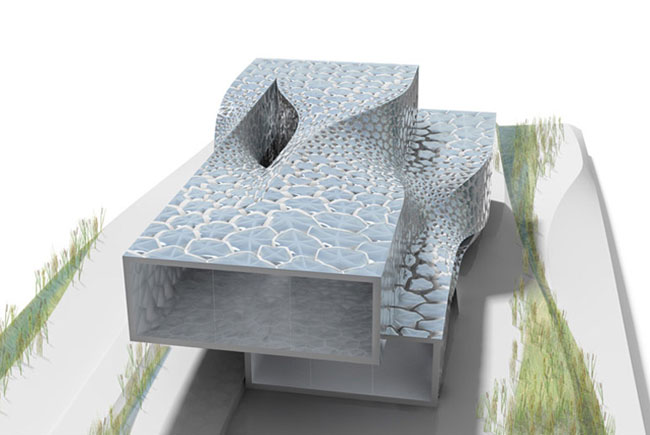 [Image: Jellyfish House by IwamotoScott].
[Image: Jellyfish House by IwamotoScott].One of the speakers at the big event this Saturday will be Lisa Iwamoto, of IwamotoScott Architecture and Assistant Professor of Architecture at UC-Berkeley.
Lisa and her firm's co-principal, Craig Scott, seem to be everywhere lately. IwamotoScott was a finalist, for instance, in the 2006 Next Generation contest sponsored by Metropolis; they both taught at the Urban Islands design studio in Sydney, Australia, last summer; they were finalists for this year's PS1 courtyard competition in New York; they just spoke as part of the Architectural League's Emerging Voices series; their work is featured in "Innovation by Design," on display now at SF MOMA; they're featured in "Open House: Architecture and Technologies for Intelligent Living" in Pasadena; and Lisa was even on the judging panel for last year's Bottom Line Design Awards.
For all of that, however, I've hardly even cracked the long list of credits that IwamotoScott has amassed; for more comprehensive coverage, visit their site and click on Profile.
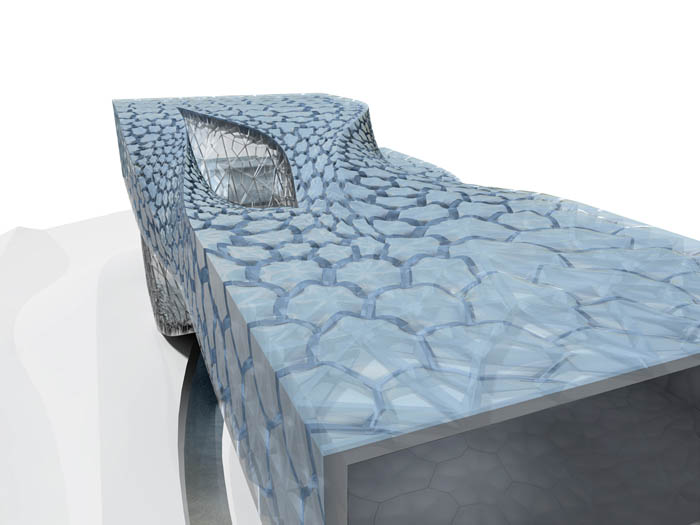 [Image: Jellyfish House by IwamotoScott].
[Image: Jellyfish House by IwamotoScott].Lisa will be presenting two projects on Saturday; those projects are the Jellyfish House and the PS1 competition entry, and they're both worth hearing about.
I don't want to pre-empt her talk by giving away too much information, however – so I'll just show you a few images, quote a few soundbites, and urge you to stop by the event if you're anywhere near San Francisco.
So the Jellyfish House, we read, "is modeled on the idea that, like the sea creature, it coexists with its environment."
 [Image: Jellyfish House by IwamotoScott].
[Image: Jellyfish House by IwamotoScott].As such, the house is designed "as a mutable layered skin, or 'deep surface', that mediates internal and external environments."
That "external environment" is rather interesting, in this case, because the proposed site is actually an artificial island, in the middle of San Francisco Bay. The island once served as a military base, which means that there is a legacy of "toxic soil" to clean-up – but the project, being impressively imagined on a variety of levels, has detoxification schemes built directly into it.
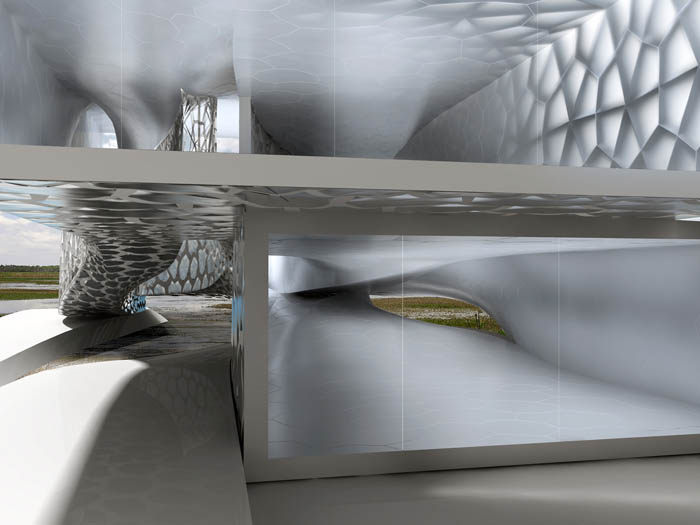 [Image: Jellyfish House by IwamotoScott].
[Image: Jellyfish House by IwamotoScott].The house, then, is part of a much larger landscape proposal involving wetlands, soil remediation, and a complex "water filtration system" that operates within the very walls of the house. There are "phase change materials," and even a "water jacket" featuring "quilted baffles."
In any case, the house is really cool and well thought-out, and I'm excited to hear more about it.
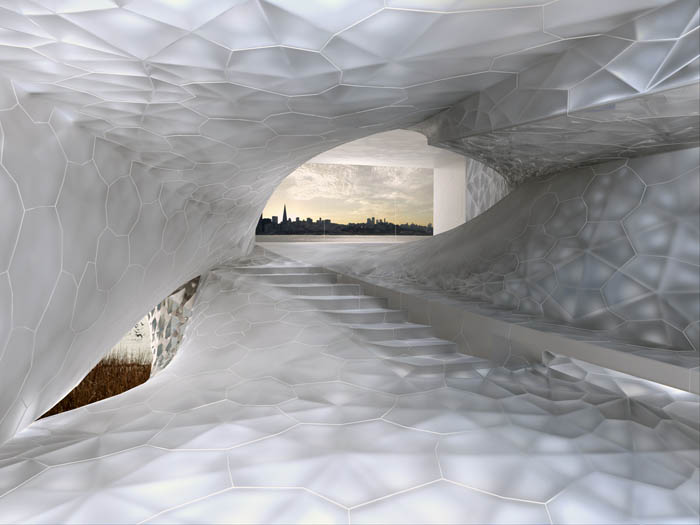
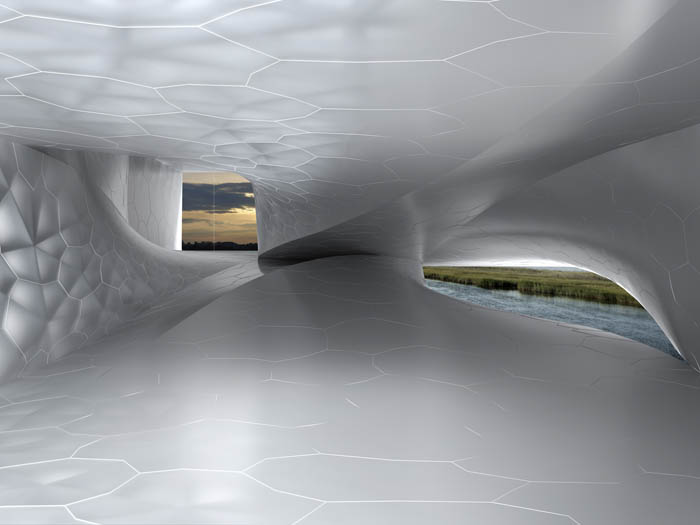 [Images: Jellyfish House by IwamotoScott].
[Images: Jellyfish House by IwamotoScott].Then there's IwamotoScott's PS1 competition entry.
The PS1 competition is an annual event in which entrants are asked to design a temporary installation for the PS1 courtyard; that space will then serve both as a venue for events and as a place for the public to congregate.

 [Images: PS1 courtyard competition entry by IwamotoScott].
[Images: PS1 courtyard competition entry by IwamotoScott].Unfortunately, I don't have very much information about this project – all the more reason for me to attend my own event and find out – but I can perhaps justifiably speculate that it uses a webbed canopy stretched across the courtyard to define and frame individual spaces...
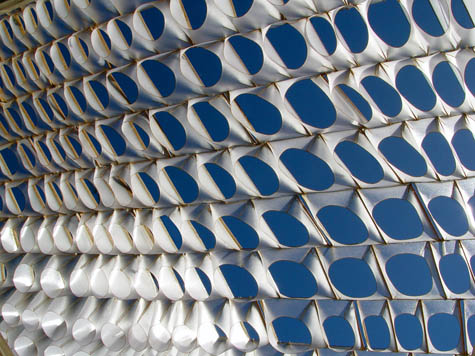 [Image: PS1 courtyard competition entry by IwamotoScott].
[Image: PS1 courtyard competition entry by IwamotoScott].There are several other projects on IwamotoScott's website worth checking out. There's the Loop House, for instance, the Split House, the FiberOpticRoom, and the 2:1 House, for starters.
That latter project is particularly interesting, as its proposed site comes with some fiendishly unique ground conditions – what the architects call "an extreme set of site constraints."
These "site constraints" include the following:
- A steep 2 to 1 upslope and extremely long, narrow access; a limited zoning envelope due to the irregular shape of the property; a stand of protected Coast Live Oak trees that cannot be removed; reuse of an existing foundation on the upper part of the site; and a panoramic view from the top of the site encompassing San Francisco Bay, the Golden Gate and Mount Tamalpais.
The house/bridge/structure also appears to consist, internally, of multiple stairways, turning each room into something more like a terrace. This is referred to as the project's "internal terrain."
Meanwhile, IwamotoScott also has a housing project called FaceSide, several different images of which I've here assembled into one.
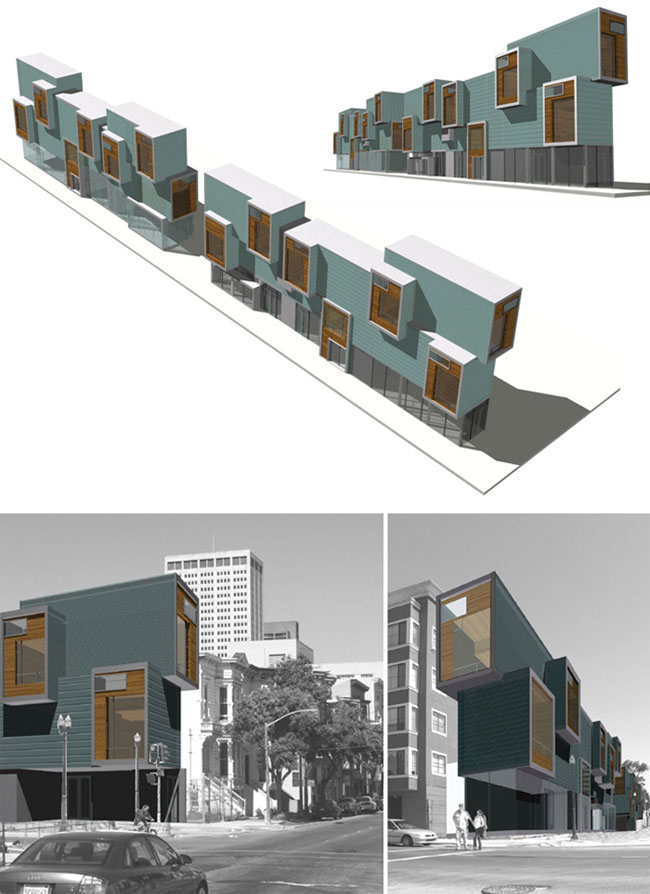 [Image: FaceSide houses by IwamotoScott].
[Image: FaceSide houses by IwamotoScott].And then there's the Moire Tower. I've cropped an image, below, so as to zero-in on the latticed and woven structure of the tower itself.
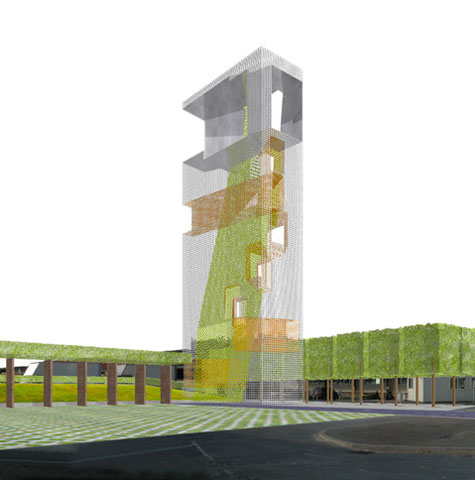 [Image: The Moire Tower by IwamotoScott].
[Image: The Moire Tower by IwamotoScott].Finally, for this post at least, there is the LiveWorkShop House, a "case study house" proposed for Cleveland, Ohio.
Among other things, the house uses "a hybrid structure – combining steel with off-the-shelf, lightweight, prefabricated structure and enclosure systems." This allows for "a flexible menu of finish materials" by which future residents can customize their individual homes. "The proposed final design," in other words, is not final at all; it is "but one demonstration of a number of possible permutations."
Of course, as with almost all good prefab, it feels – and looks – a bit like a game of Tetris.
 [Image: The LiveWorkShop House by IwamotoScott].
[Image: The LiveWorkShop House by IwamotoScott].So come out on Saturday to hear Lisa discuss both the Jellyfish House and the PS1 competition design – though feel free to ask her questions about the other projects, too. In the meantime, be sure to check out IwamotoScott's website.
(A few more images are available in my IwamotoScott Flickr set).
No comments:
Post a Comment